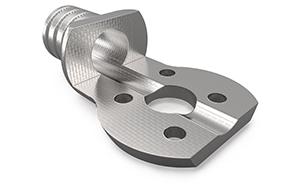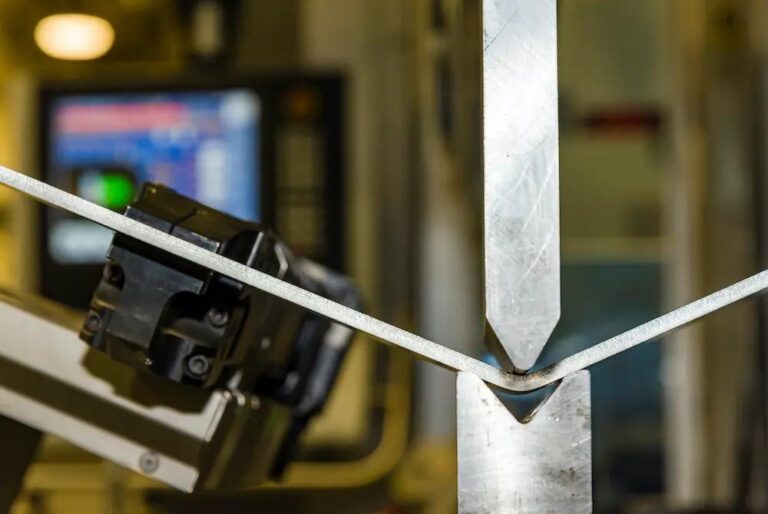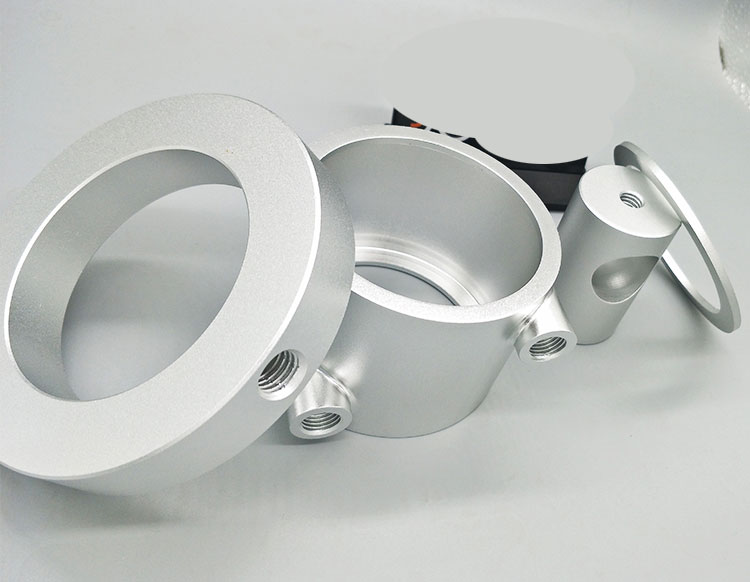When SpaceX iterates rocket fuel valves in 48 hours with 3D printing, when Lockheed Martin is dead set on 0.005mm tolerances in titanium cutting – aerospace rapid prototyping is betting life and death in space with millimeter tolerances on the ground. This article uncovers NASA-grade manufacturing standards and hits the 5 most painful and destructive pitfalls for engineers.

🔥 Chapter 1: Material Purgatory: The Code for Survival in Extreme Environments
Titanium vs. nickel-based alloy choice matrix
| performance | Ti-6Al-4V (Grade 5) | Inconel 718 | Red Line of Death (application scenarios) |
|---|---|---|---|
| specific strength | 260 MPa·cm³/g | 220 MPa·cm³/g | Satellite bracket → Titanium alloy |
| temperature limit | 450℃ | 700℃ | Engine nozzle → Inconel |
| Liquid nitrogen embrittlement | -196℃ impact toughness>40J | <15J | Cryogenic fuel valve → Titanium alloy |
| processing cost | $120/kg | $350/kg | Non-high-temperature parts → Titanium alloy |
Boeing Nightmare Event:
Misuse of 7075 Aluminum Alloy for Engine Mounts → Cold Embrittlement at -55℃ at High Altitude → Fracture at Ten Thousand Meter Altitude
⚙️ Chapter 2 Process Battlefield: The Annihilation of Micron-Scale Errors
Vibration control of 5-axis CNC
Vibration exceeding 0.5μm → fatigue life of turbine blade plummets by 80%
DMG MORI solution:
▶ Active magnetic levitation spindle + vibration compensation algorithm → residual vibration <0.1μm
Thermal deformation compensation formula:
Compensation = (Cutting temperature -20℃) × 0.015% × Feature length
Life and death line of electric discharge machining (EDM)
White layer thickness > 10μm → Risk of stress corrosion on nickel alloy disc × 7
Swiss GF program:
▶ Kerosene medium + Class 3A micropulse → Heat-affected zone pressed to 3μm
🧪 Chapter 3 The Certification Abyss: The Bloody Trial of the AS9100D Standard
The Genlock of Traceability
Laser laser engraved QR code:
Depth 0.03mm → Alcohol wipe 200 times without peeling off
Lockheed Martin standard: contains melting lot number/heat treatment curve/inspection report
Blockchain Deposit:
▶ Processing parameters uploaded in real time → Tamper-proof audit trail
Cleanliness Death Penalty Line
Particulate Residue Standard:
| Particle size (μm) | Allowable Quantity / ㎡ |
|---|---|
| >100 | 0 |
| 50-100 | ≤3 |
| <50 | ≤300 |
NASA Cleanroom Solutions:
▶ ISO Class 5 Cleanroom + Ultrasonic + Plasma Composite Cleaning
✨ Chapter 4: Surface Engineering: From Vacuum to Plasma Hell on Fire
The Triple Armor of Hard Anodizing
Low-temperature type (-5°C):
Film thickness 30μm → Hardness > 500HV → Wear-resistant super-hard chrome plating
Sealing technology:
Cerium salt containment → Corrosion resistance increased by a factor of 5 (through 3000 hours of salt spray)
Thermal control coatings:
Aeroglaze Z306, USA → Emissivity ε = 0.88 → First choice for heat dissipation in satellites
Nano-camouflage of vacuum coating
Magnetron sputtering breakthrough:
| protective layer | adhesion | Applicable Scenarios |
|---|---|---|
| CrAlN | ASTM 5B | Anti-sticking engine bearings |
| DLC | ASTM 4B | Mars Rover Gear Anti-Wear |
🛡️ Chapter 5 Extreme Test: Validating Survival with Destruction
Nine Trials from Liquid Nitrogen to Flame
-196°C liquid nitrogen immersion:
Hold for 2 hours → detect microcracks (resolution 0.01mm)
Thermal shock cycle:
-55°C (30min) ⇄ 150°C (30min) → 20 cycles
Plasma Wind Tunnel:
Mach 8 airflow + 1800°C → Material ablation rate test
SpaceX Fuel Valve Case:
Failed Heat Shock Test → Liquid Oxygen Port Leak → Prototype Blowup → 6 Months Launch Delay
📊 Chapter 6: Cost Nuke: How to Save 45% on R&D
The Golden Rule of Material Substitution
Non-load-bearing structure:
▶ Carbon fiber-reinforced PEEK instead of titanium → 60% cost reduction
Ground test piece:
▶ Aluminum alloy pseudo-titanium → Save $2800 per piece
Process Economy Inflection Point
When N≤3 → Metal 3D printing preferred
When 3<N≤20 → 5-axis CNC more economical
When N>20 → Vacuum remolding cost optimal
🌟 Conclusion: Dancing on the Precision Wire at the Edge of Space
The essence of aerospace rapid prototyping is to exchange the extreme demands on the ground for absolute reliability in space. When titanium alloy undergoes -196℃ quenching in liquid nitrogen, and when ceramic coating guards the last 0.01mm in plasma fire prison – these seemingly cold prototypes will eventually become the cornerstone of human breakthrough in the atmosphere.





